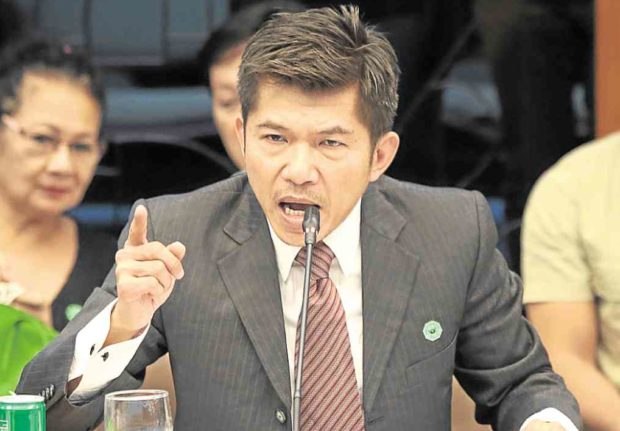Ex-solon’s aide killed in a shootout, not a rubout – PNP

Credit to Author: besguerra| Date: Mon, 04 Feb 2019 23:22:04 +0000
The Philippine National Police on Monday presented to the Senate its findings disputing allegations that the killing of Richard Santillan, aide to former Biliran Rep. Glenn Chong, was a rubout.
PNP officials spoke at a hearing called by the Senate public order and dangerous drugs committee, which is looking into politically motivated killings in the country.
The hearing centered on the killing of Santillan and did not tackle specific killings of elected public officials, which is expected to be tackled at the next hearing.
Chong insisted that there was foul play in his aide’s death in a Dec. 10 shootout in Cainta, Rizal province.
He cited a hematoma, a gash wound and loss of Santillan’s toenail as signs of torture.
Chong alleged that Santillan was tortured elsewhere before being put in a vehicle and shot.
But the PNP said the shootout took place after Santillan tried to evade police officers who were tailing his vehicle, which had been flagged as used to distribute drugs.
NBI parallel probe
The National Bureau of Investigation is conducting a parallel probe of the incident and is still waiting for the PNP to submit certain documents.
The NBI also wants to conduct a trajectory examination of the vehicle involved in the shootout.
At the hearing, Supt. Joseph Arguelles of the PNP Calabarzon office said evidence showed that Santillan’s death was the result of a shootout.
The evidence included bullet holes on the vehicle of the Cainta police and the sworn statements of witnesses.
One of them is a Grab driver who said he had to suddenly slow down when the tricycle running ahead of him stopped due to a burst of gunfire, Arguelles said.
21 gunshot wounds
He reiterated that Santillan was a protector of the criminal group “Highway Boys.”
As for allegations of torture, Arguelles said crime lab results showed Santillan died from multiple gunshot wounds. He had 21 gunshot wounds.
The trajectory of the bullets indicated that Santillan was moving and was able to fire shots while outside the vehicle, he said.
Supt. Pierre Paul Carpio, chief of the PNP crime laboratory in Rizal province, disputed Chong’s allegations that Santillan was tortured before he was placed in the vehicle and shot to death.
According to Carpio, the condition of Santillan’s toenail was due to a grazed gunshot wound.
He said the wound could be correlated with the bullet holes in the vehicle.
As for the hematoma on Santillan’s body, he said this was not caused by a blunt object but was caused by a gunshot wound.
The slug caused the hematoma before exiting the body, he said.
He also said the open wound or abrasion on Santillan’s body was not a sign of torture. It was caused by fragments from the slug, he said.
The pattern of the blood spatters in the vehicle showed as well that Santillan was alive when he was in the vehicle, he said.
There were small spatters in the drivers’ seat and then bigger ones in the passenger seat, where Santillan was believed to have transferred.
His blood pooled on the ground when he got down from the vehicle, Carpio said.
No close-contact fire
Sen. Panfilo Lacson asked Carpio if there had been indications of close-contact fire on Santillan’s body.
The forensic expert said there was none, adding that Santillan’s clothes did not test positive for gunpowder residue.
But Public Attorney’s Office forensics chief Erwin Erfe, who also spoke at the hearing, insisted that Santillan’s body bore signs of torture.
Erfe said a majority of the gunshot wounds were inconsistent with a shootout and some were obtained after death.